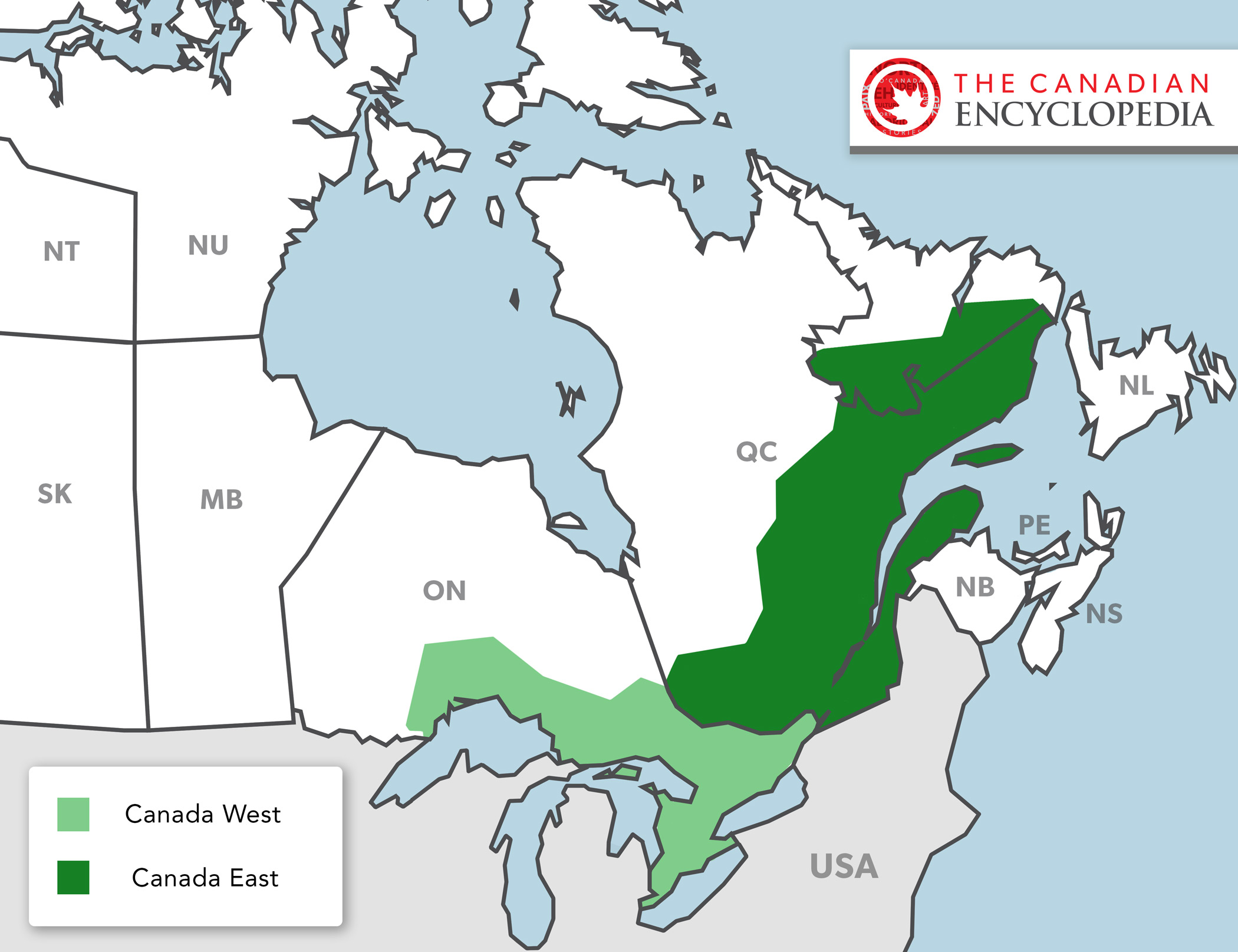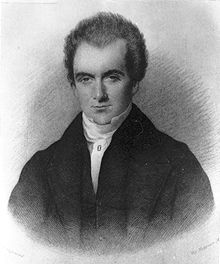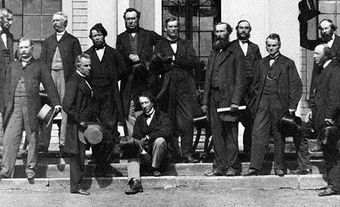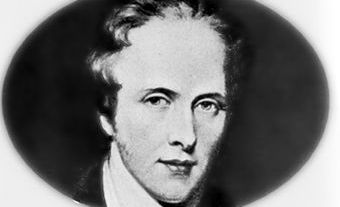
In 1841, Britain combined the colonies of Upper and Lower Canada into a single colony called the Province of Canada. The colony had two regions: Canada West (formerly Upper Canada), and Canada East (formerly Lower Canada).
Population and Geography
Canada West was bordered by the Ottawa River in the east, Lake Superior in the west and Lake Erie in the south. Rupert's Land, to the north, was chartered to the Hudson's Bay Company.
The population of Canada West was about 480,000. This included Indigenous people, British settlers and Loyalists from the United States. Canada West was smaller than the mostly French-speaking population of Canada East (around 510,000 of its 670,000 people were francophone).
Governance
The two regions had the same number of seats in the colonial legislature. It was located first in Kingston, then Montreal, and later Toronto and Quebec City. Canada West, therefore, had greater political representation as measured by population. (See also: Rep by Pop.) Real political power, however, resided in the British governor. He ruled the two provinces with an appointed executive council.
Economic and Population Growth
Canada West grew rapidly thanks to steady immigration from England, Scotland, Ireland and the United States. Many newcomers cleared the forests, cut lumber and worked the rich farmland of the area. Settlement eventually pushed up against the boundaries of the rocky Precambrian Shield. As the best farmland was claimed, people began to look further west for migration and settlement, to the young Red River colony, the Prairies and beyond.

Meanwhile, industrial development came quickly. Railways were built between Montreal, Toronto and Sarnia, and south into
the United States. Shipping canals were expanded. Despite economic hard times and the worldwide depression of the late 1840s, Canada West developed and generally prospered. This was due to rising population,
increasing
transportation links and, as of 1854, Reciprocity (
free trade) with the US. This opened up huge nearby markets for Canadian grain, lumber, fruit, textiles and machinery.
By 1852, the population of Canada West had grown to about 950,000 people. This made it larger than Canada East, which had about 890,000 people.
Responsible Government
In 1848, a political reform movement replaced the conservative forces that had long controlled the elected assembly. The movement was led by Robert Baldwin in Canada West and Louis-Hippolyte LaFontaine in Canada East. Along with reformers in Nova Scotia, the co-premiers convinced imperial leaders in Britain to grant responsible government to the British North American colonies. As a result, LaFontaine and Baldwin led the Province of Canada's first executive council, or Cabinet, that was responsible to the elected legislature and not a colonial governor.

Rep by Pop
After achieving responsible government, however, politicians in Canada West began agitating for true representation by population. In the 1840s, Canada West had a smaller population than Canada East. It therefore benefitted from having a disproportionately large number of seats in the legislature. By the 1850s, however, its population was the bigger of the two. Reformers such as George Brown, Reform Party Leader and editor of Toronto's Globe newspaper, strongly supported the campaign for representation by population. This would mean more seats for Canada West.
Political Deadlock
This and other divisive issues — such as government funding for Catholic schools throughout the colony — made English Protestants in Canada West suspicious of unchecked French Catholic power. Many French Canadians, on the other hand, viewed such matters as a struggle for cultural survival.
The rift between English and French created years of unstable government and political deadlock. The situation was worsened by a growing divide between conservatives and reformers within Canada West. This made addressing the colony's needs and problems nearly impossible. Structural change was required to break the political paralysis.

Creation of Ontario
In 1864, an unlikely Great Coalition sought to solve Canada's problems. The coalition included reformers led by George Brown, and conservatives led by John A. Macdonald in Canada West and George-Etienne Cartier in Canada East. They decided to create a new federation of all British North American colonies. Negotiations began with the Maritime colonies at the Charlottetown Conference in 1864. By 1867, Nova Scotia and New Brunswick agreed to enter Confederation with the two Canadas.
With Confederation in 1867, the Province of Canada was dissolved. Canada East became the province of Quebec and Canada West became the province of Ontario. Its legislature and capital were located in Toronto. Macdonald, one-time premier of the Province of Canada, became the first prime minister of the new Dominion of Canada.
See also: Ontario and Confederation.

 Share on Facebook
Share on Facebook Share on X
Share on X Share by Email
Share by Email Share on Google Classroom
Share on Google Classroom

